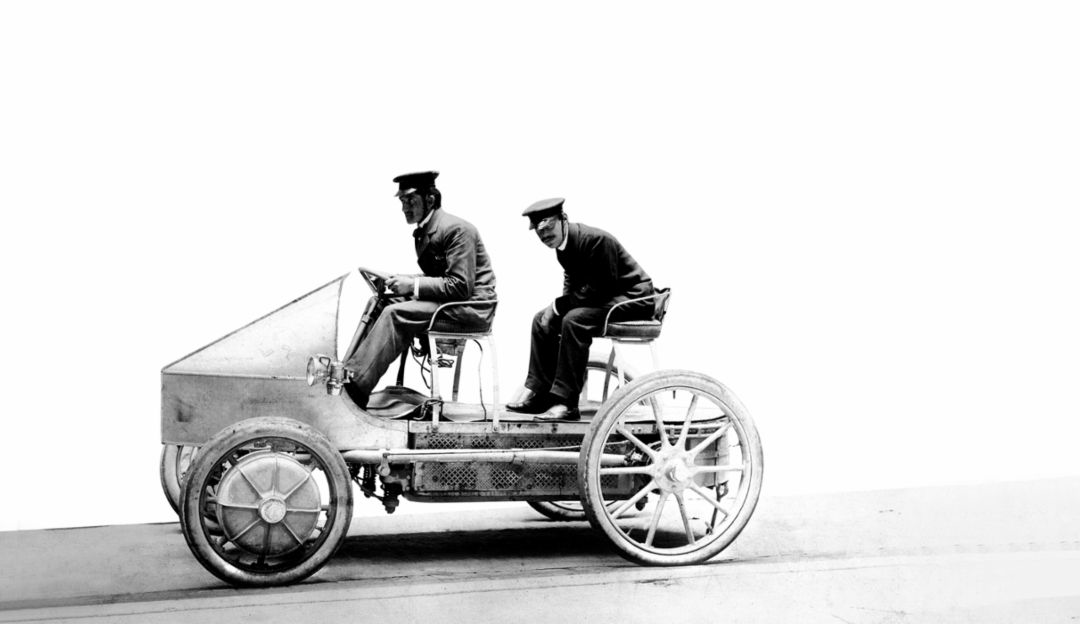Egger-Lohner C.2 Phaeton
By Lanny Grant
Porsche Electric History
At age 23, Ferdinand Porsche joined Lohner-Werke, a Viennese company that built luxury coaches. Owner Ludwig Lohner was convinced horse-and-buggy transportation was ending, and that gas- and electric-powered vehicles were the wave of the future. He charged Porsche with help in developing such a vehicle.
The original electric-motor engine was patented in 1884. For the next fourteen years, the technology would be steadily improved upon. By 1898, however, Porsche had made quantum leaps in its advancement and usage.
His design utilized electric motors on the hubs of the front wheels. Instead of a standard battery pack, he used two small gasoline engines to power a generator, producing the electricity to drive the front wheels.
The Egger-Lohner car debuted that year with many of its components created by Porsche. The car itself was called the “C.2 Phaeton.” But Porsche tagged all of the components he contributed with “P1,” or “Porsche 1.” The car reached speeds up to 16 mph, unheard of at the time.
A year later, Porsche improved upon his own advancements, applying the electric hub technology of the C.2 Phaeton to all four wheels. The result was the Lohner-Porsche. It was the first all-wheel drive passenger vehicle in the world, with Porsche topping his own speed record at 23 mph
The original electric-motor engine was patented in 1884. For the next fourteen years, the technology would be steadily improved upon. By 1898, however, Porsche had made quantum leaps in its advancement and usage.
His design utilized electric motors on the hubs of the front wheels. Instead of a standard battery pack, he used two small gasoline engines to power a generator, producing the electricity to drive the front wheels.
The Egger-Lohner car debuted that year with many of its components created by Porsche. The car itself was called the “C.2 Phaeton.” But Porsche tagged all of the components he contributed with “P1,” or “Porsche 1.” The car reached speeds up to 16 mph, unheard of at the time.
A year later, Porsche improved upon his own advancements, applying the electric hub technology of the C.2 Phaeton to all four wheels. The result was the Lohner-Porsche. It was the first all-wheel drive passenger vehicle in the world, with Porsche topping his own speed record at 23 mph
A year later, Porsche improved upon his own advancements, applying the electric hub technology of the C.2 Phaeton to all four wheels. The result was the Lohner-Porsche. It was the first all-wheel drive passenger vehicle in the world, with Porsche topping his own speed record at 23 mph
Lanny Grant,
Contributor, MetronGarage-Elevated Garage Journal
Contributor, MetronGarage-Elevated Garage Journal




